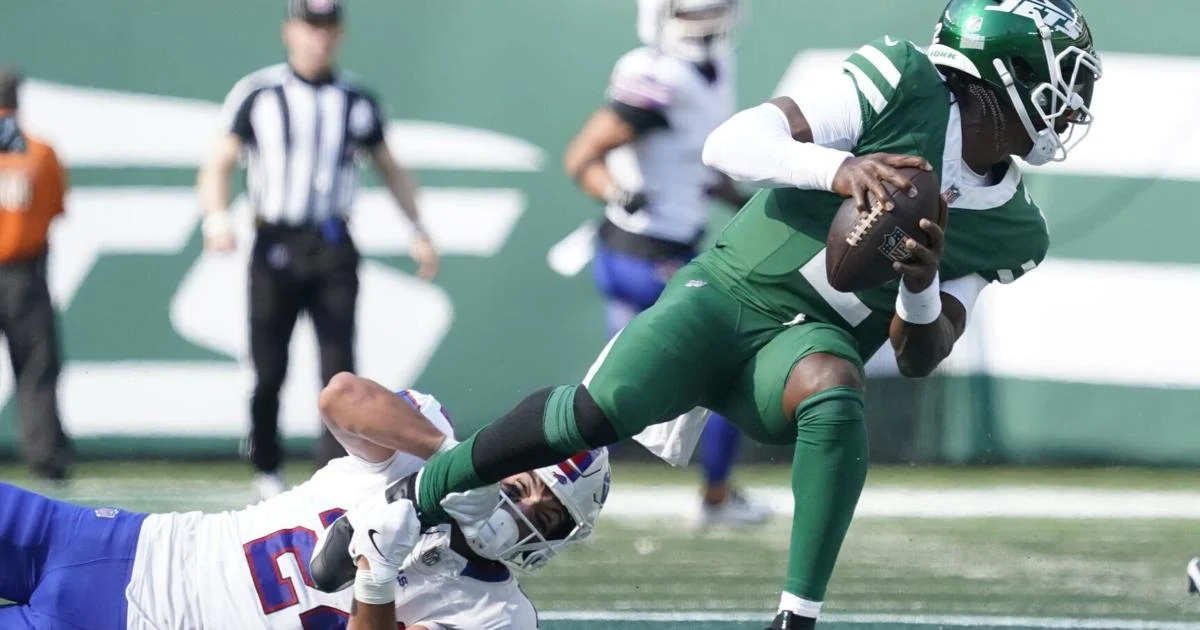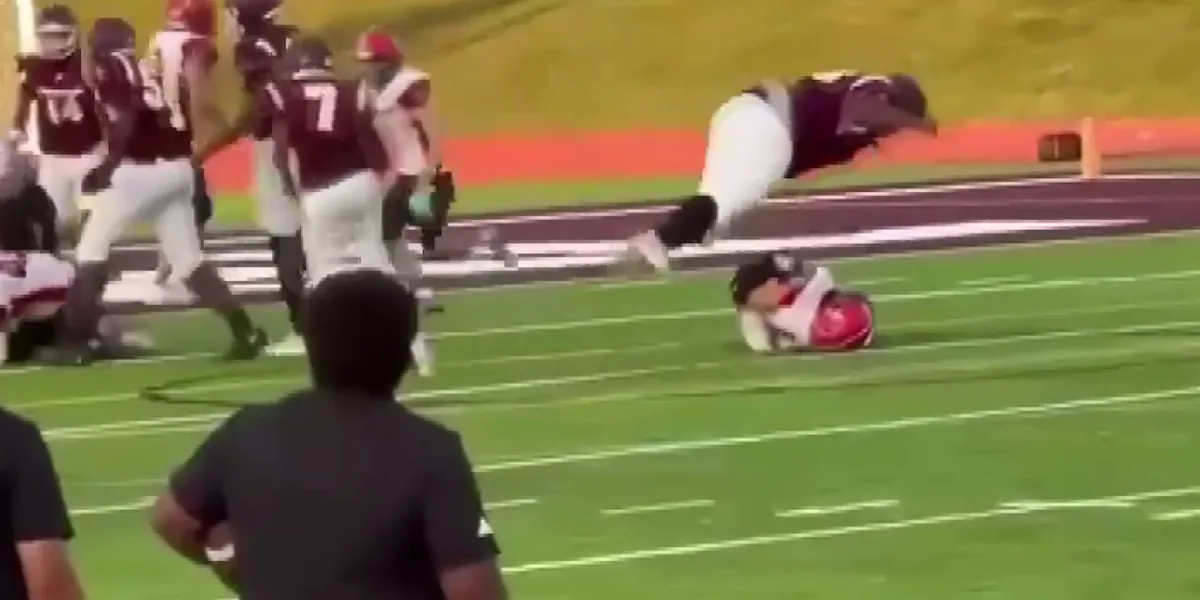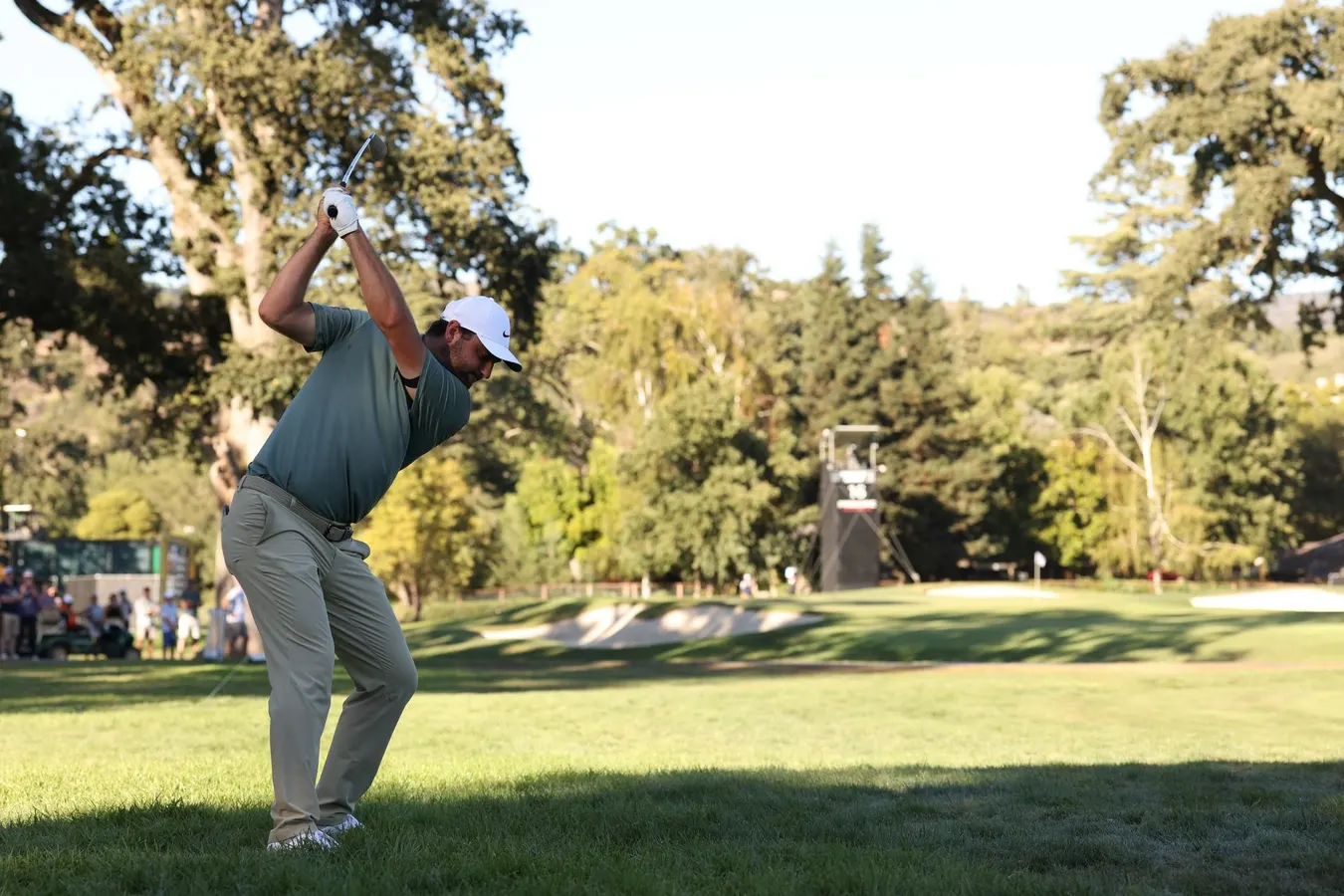
Jay Skurski
News Sports Reporter
Get email notifications on {{subject}} daily!
Your notification has been saved.
There was a problem saving your notification.
{{description}}
Email notifications are only sent once a day, and only if there are new matching items.
Followed notifications
Please log in to use this feature
Log In
Don’t have an account? Sign Up Today
The Buffalo Bills are making life uncomfortable for opposing quarterbacks.
Not miserable, mind you, but at least mildly difficult.
One of the more confounding stats from the Bills’ 3-0 start is their pressure rate. According to two websites that track advanced stats, the Bills’ defense is a top-four unit in pressure rate through three games.
With just six sacks, however, the Bills rank tied for 19th in that category, which shows that rushers aren’t quite getting home, even if they are getting the opposing quarterback off his spot.
At Pro Football Reference, the Bills’ pressure rate is measured at 33.0%, which ranks third in the league behind Denver (39.2%) and Minnesota (33.7%). At FTN Fantasy, the Bills’ pressure rate is measured at 38.6%, which ranks No. 4 in the league behind Minnesota (40.8%), Washington (39.8%) and Cleveland (39.1%).
We can draw a couple of conclusions. No. 1, pressure rate is a subjective statistic. The league leader according to Pro Football Reference, the Broncos, rank No. 12 according to FTN Fantasy, at 35.2%. Clearly, both outlets have different criteria for what they view as a quarterback pressure.
Nevertheless, the Bills being in the top four on both lists shows a general agreement that the team’s pass rush is impacting the game at a high level – even if it’s not quite finishing the job in terms of sacks.
“It definitely takes a mental strain on you because you’re close, you’re close, you’re close,” defensive end A.J. Epenesa said. “How many times can you keep getting close without getting frustrated? That’s the name of the game is just keep swinging, keep throwing punches. They’re going to land.”
Interestingly enough, the Bills have faced 75 pass attempts against through three weeks, the fewest in the league. That has meant fewer opportunities for sacks. The pressure rate would indicate that if the pass rush stays the course, the sack numbers should eventually follow.
Listen now and subscribe: Apple Podcasts | Google Podcasts | Spotify | RSS Feed | SoundStack
The Bills have faced Baltimore’s Lamar Jackson and the New York Jets’ Justin Fields, who are perhaps the most mobile at the position in the entire league. They are exceptionally elusive and not easy to sack.
“It can be tough. I know personally, my mindset is just keep going,” defensive end Greg Rousseau said. “The more you hit the quarterback, the more you just get to the quarterback, sacks are going to come. … We’ve just got to get there, because there are going to be games where they do hold the ball.”
While it may seem counterintuitive, Rousseau said it’s the better quarterbacks in the league who sometimes hold onto the ball longer, with the reason being they are confident in their ability to get rid of it at the right time. They also are perhaps more comfortable with their protection and throwing into tighter windows than a younger quarterback might be.
If that holds true during Sunday’s game against the New Orleans Saints, the Bills might again not put up a ton of sacks against the inexperienced Spencer Rattler. Of course, when a quarterback gets the ball out of his hands quickly, that means the opposing offense, for the most part, is trying to dink and dunk its way down the field.
That’s what happened last week as the Dolphins did not have an offensive play of 20-plus yards.
When the opposing quarterback is getting the ball out quickly, that’s when the Bills’ coverage has to be in sync with the rush. If the secondary can force the quarterback to hold onto the ball just a split second longer, that might be all the time needed for the rush to get home, based on the pressure numbers.
“Just generally speaking, we can be better not just rushing the passer, but working together to impact the play or affect the quarterback better,” Bills coach Sean McDermott said. “Those two, you guys know I’ve said it over and over again, have to work in concert with one another.”
Some of the Bills’ inconsistency on defense in the first three games has been when one of those is working, but the other isn’t as strong. The rush might be strong, but the coverage lacking on one play. On the next, the opposite might be true. Complementary football doesn’t just refer to the offense, defense and special teams working together. It also means those two aspects of the defense being on the same page.
“We’ve got to be able to execute and make sure our rush and coverage is working together,” defensive coordinator Bobby Babich said after the Bills beat the Dolphins. “It starts with me, I got to put us in the right position, and then we got to be able to execute. We know what the weaknesses are of every call that we’re in and if they attack one of the weaknesses, it’s my job to put us in a different call.”
It’s not all on Babich, though. The Bills have had looks in the backfield, but not been able to complete the play. Notably, cornerback Tre’Davious White came in untouched on a well-time cornerback blitz against Miami on a third down, but missed Tua Tagovailoa. If he makes the play, the drive stalls and perhaps the Dolphins don’t hang around for as long as they did in the game.
Down and distance also play a big part. The frustrating part of the game against the Dolphins is the number of third-and-long situations Miami was able to convert. On those plays, the quarterback can be expected to hold the ball longer to give his receivers time to run deeper routes for the necessary first-down yardage. In those situations, the defensive line has to win and create pressure. When it’s third and short, the rush plan is altered because the quarterback is likely looking to receivers who have shorter routes. In those situations, it’s on the secondary to have tight coverage, taking away the shorter routes.
Understanding those situations, or syncing them up, as Babich referred to it, will help lead to more sacks.
“We may pressure him 20 times, but on that 21st time, he holds the ball just for that split second. That’s the opportunity to go for the sack or go for the ball and get it out,” Epenesa said. “That’s the kind of mindset that I try to take into it. We’re pressuring them, and we’re going to get there eventually.”
Get in the game with our Prep Sports Newsletter
Sent weekly directly to your inbox!
* I understand and agree that registration on or use of this site constitutes agreement to its user agreement and privacy policy.
Jay Skurski
News Sports Reporter
Get email notifications on {{subject}} daily!
Your notification has been saved.
There was a problem saving your notification.
{{description}}
Email notifications are only sent once a day, and only if there are new matching items.
Followed notifications
Please log in to use this feature
Log In
Don’t have an account? Sign Up Today



